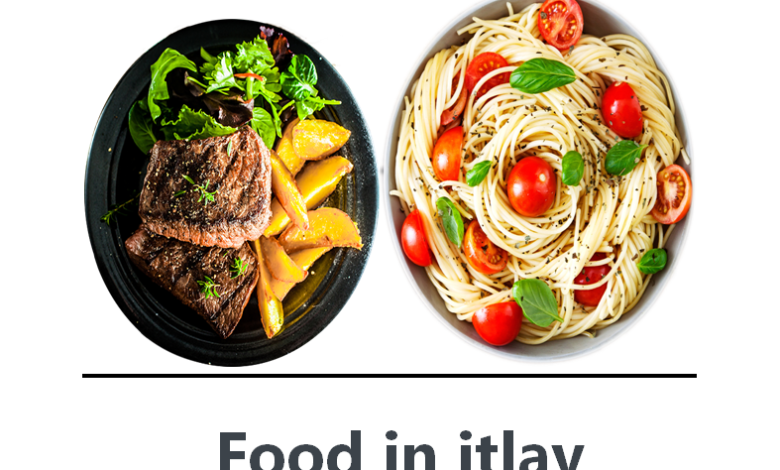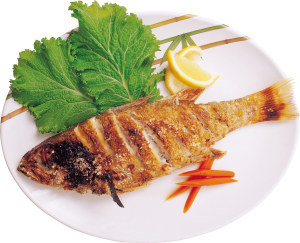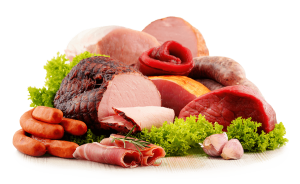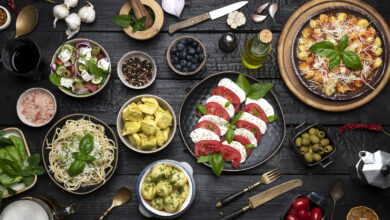What is the food culture of Italy? What is a typical meal in Italy?
food culture of Italy

Food culture of Italy:
Italian cuisine is firmly founded in history, regional uniqueness, and a passion for using the best ingredients possible. Italian food is renowned for its simplicity, strong tastes, and use of fresh, in-season ingredients. These are some important facets of Italian cuisine:
Regional Diversity: The varied topography, climate, and regional distinctions of Italy have a significant impact on its culinary culture. Every location has distinctive foods, ingredients, and cooking techniques.
Fresh and Seasonal Ingredients: Italian cuisine places a strong emphasis on using foods that are local, fresh, and in season. Italian cuisine emphasizes the use of fresh ingredients such fruit, meat, fish, and dairy.
Pasta and Risotto: Italian food is fundamentally based on pasta. Italians have a wide range of pasta shapes and varieties, each suitable for particular recipes and sauces. Another well-liked staple is the creamy rice dish known as risotto.
Olive Oil and Wine: Italian cuisine relies heavily on olive oil, which is applied both during cooking and as a finishing touch to meals. Italian cuisine is heavily reliant on wine, with several areas generating varied varieties.
Cheese: Italian cuisine uses a variety of Italian cheeses, such as Parmigiano-Reggiano, mozzarella, ricotta, and gorgonzola, to give varied dishes richness and taste.
Antipasto, Primo, Secondo, Dolce: Antipasto (appetizer), primo (first course, frequently pasta or risotto), secondo (main course, frequently meat or fish), and dolce (dessert) make up the classic Italian meal pattern.
Aperitivo and Digestivo: Pre-meal beverages called aperitivo are frequently served with tiny appetizers to pique appetites. Digestivo, commonly used following a meal to help with digestion, frequently contains liqueurs or grappa.
Famous Dishes: Pasta meals (such as spaghetti, lasagna, and ravioli), pizza, risotto, osso buco, panettone, gelato, and tiramisu are just a few of the well-known Italian dishes.
Family and Social Dining: Italian cuisine places a strong emphasis on shared dining occasions and family get-togethers. Meals are viewed as a time for celebration, bonding, and discourse.
Culinary Festivals and Events: Throughout the year, Italy conducts a number of culinary festivals and events that highlight certain cuisines, ingredients, or geographic locations. The culture of Italian cuisine includes several occasions.
Coffee Culture: Italians are renowned for their love of coffee. Italians have a distinctive manner of drinking coffee, from a rapid shot at the bar to the slow ritual of sipping a coffee in a café. Espresso is a staple.
Farmers’ Markets and Local Produce: Italians frequently like purchasing fresh foods at neighborhood farmers’ markets because they value the freshness and authenticity of locally obtained items.
An integral part of Italian identity and a source of pride for its citizens, Italian culinary culture is profoundly interwoven in everyday life, holidays, and rituals.

What is a typical meal in Italy?
The format of an Italian dinner often consists of numerous courses, each exhibiting various flavors and techniques. It’s important to remember that regional variations in Italian cuisine might affect the individual meals. The overall outline of an Italian lunch is as follows:
- Antipasto (Appetizer): An antipasto, which often consists of cured meats, cheeses, olives, bruschetta, and other small appetizers, frequently precedes the main course. This dish stimulates the appetite and introduces the tastes of the next course.
- Primo (First Course): A pasta dish or risotto is typically served as the first meal. Pasta meals like spaghetti, fettuccine, gnocchi, or ravioli are frequently served with different sauces like marinara, alfredo, or pesto. A creamy rice dish called a risotto is prepared with broth and a variety of ingredients, such as mushrooms, fish, or vegetables.
- Secondo (Second Course): The main dish, or secondo, usually consists of meat, fish, or fowl. Common choices include grilled or baked meats (such as chicken, beef, or lamb), fish, or specialized dishes like Saltimbocca alla Romana (veal with prosciutto and sage) and Osso Buco (braised cow shanks).
- Contorno (Side Dish): Vegetable side dishes like sautéed spinach, roasted vegetables, grilled asparagus, or a crisp salad typically make up a contorno. It enhances the secondo and diversifies the meal.
- Formaggio e Frutta (Cheese and Fruit): A variety of local cheeses may be offered after the main courses, sometimes with fresh fruit, honey, or nuts. There are many different kinds of cheese to pick from, and they are a popular ingredient in Italian food.
- Dolce (Dessert): Italian desserts are a great way to end a dinner. Tiramisu, Panna Cotta, Gelato, Cannoli, Torta della Nonna (Grandma’s Cake), and many other desserts are available. Italy is renowned for its rich and varied dessert selections.
- Caffè (Coffee) and Digestivo (Digestif): A cup of coffee or an espresso usually rounds out the meal. with addition, a digestive liqueur or grappa, such as Limoncello or Amaro, may be provided to help with digestion.
- Digestivo (Digestif): Italians frequently partake in a digestif, which may contain amaro, grappa, or other alcoholic beverages with a reputation for promoting digestion, after a meal.


It’s crucial to remember that Italian dinners emphasize discussion, laughing, and building lasting memories around the table. They are also a social and cultural event that are frequently shared with family and friends. Depending on the situation, the locale, and the individual’s tastes, the composition and particular meals may change.


